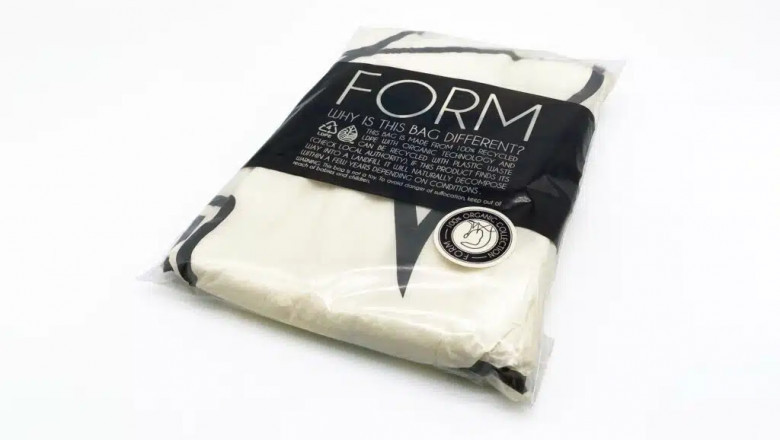views
Every time you order something, it comes wrapped in layers of packaging. Boxes, bubble wrap, plastic air pillows—so much of it ends up in the trash. Most of it is used once and thrown away.
Shipping has become a part of daily life. Businesses send out millions of packages every day. That means tons of wasted materials. The cost adds up, and so does the waste.
Not everything needs a bulky box. Poly mailers offer a better way. They use fewer materials, take up less space, and leave behind less waste. Many companies are switching to them. They are simple, efficient, and cut down on trash.
Why Packaging Waste Is a Big Issue
Look around, and you will see packaging waste everywhere. Boxes pile up at doorsteps. Trash bins fill with plastic wrap and foam padding.
A lot of that waste comes from oversized boxes. A small item might arrive in a big box filled with paper or plastic just to keep it from moving around. That extra material serves no real purpose.
Recycling is an option, but not all packaging gets recycled. Some materials mix paper with plastic, making them hard to process. Many end up in landfills or oceans.
Consumers do not like waste. Many prefer brands that use less packaging. Businesses that cut down on excess materials save money and appeal to more buyers.
How Poly Mailers Cut Down on Excess Materials
Boxes need tape. They need stuffing and they take up space. Poly mailers do not.
These lightweight bags fit snugly around products. No need for extra padding or bulky fillers. They work best for soft goods like clothing, but they also ship small, non-breakable items well.
A box takes time to pack. You fold it, tape it, and fill the empty spaces. A mailer? You slide the item in, peel the adhesive strip, and seal it. Simple.
Less material used means less material wasted. It also means fewer costs for businesses.
Reducing Shipping Volume and Transportation Waste
Shipping waste is not just about packaging. It is also about space.
Trucks, planes, and warehouses fill up fast. A stack of boxes takes more room than a stack of poly mailers. Less space used means more packages per shipment.
More efficient shipping leads to fewer trips. Fewer trips mean lower fuel use. Less fuel burned means less pollution.
For businesses, shipping costs depend on size and weight. Poly mailers weigh less and take up less space. That means lower fees. Small changes in packaging make a big difference in cost and carbon footprint.
How Recycled and Biodegradable Poly Mailers Help
Not all plastic is bad. Some can be reused. Some break down safely over time.
Many poly mailers today come from recycled materials. That means less virgin plastic is made. Some mailers are biodegradable, meaning they will not sit in landfills for decades.
Eco-friendly mailers offer the same durability as regular ones. They still protect items from dirt, water, and tearing. But they also help cut plastic waste.
More brands are moving to biodegradable and recyclable mailers. As demand grows, options improve.
Encouraging Reuse and Recycling
Not all packaging gets one-time use. Some can work more than once.
Many poly mailers now have a second adhesive strip. You can reseal them and send them back if needed. That helps with returns and reduces waste.
Some companies print clear recycling instructions on their mailers. That helps you know where and how to dispose of them properly. Brands are also launching take-back programs. Customers can send back used mailers for proper recycling. This keeps plastic out of landfills and it gets a different life.
The Cost Savings of Less Packaging Waste
Waste costs money. The more materials used, the more businesses spend.
Boxes cost more than mailers. Filler materials add to expenses. Heavy, bulky packages mean higher shipping fees.
With poly mailers, businesses save on packaging and shipping costs. They also save on storage space. A roll of mailers takes up less room than a stack of boxes.
For customers, less waste means fewer piles of unnecessary packaging at home. No one enjoys breaking down boxes and stuffing trash bins with packing materials. Cutting excess packaging benefits everyone.
The Future of Shipping: Smarter Packaging Choices
E-commerce keeps growing. More packages go out every day. The need for smart packaging grows with it.
Brands are rethinking their shipping materials. Many are ditching oversized boxes for poly mailers. The shift is happening fast.
Governments are pushing for better packaging solutions. Consumers are demanding less waste. Businesses that switch early stay ahead. Those that do not may struggle to keep up.
Mailers are not the only solution, but they are a step in the right direction. More innovation will come. The focus will stay on reducing waste, cutting costs, and keeping shipping simple.
Conclusion
Packaging waste is a problem. It fills landfills. It clutters homes. It costs money.
Poly mailers help solve that. They use less material, take up less space, and cut down on shipping waste. Many are now made from recycled or biodegradable plastic, making them even better.
Businesses that switch to mailers save money. Customers get less packaging clutter. The environment benefits from lower plastic waste.
Better packaging makes sense. Less waste, lower costs, smarter shipping. It is a simple change with lasting benefits.














Comments
0 comment